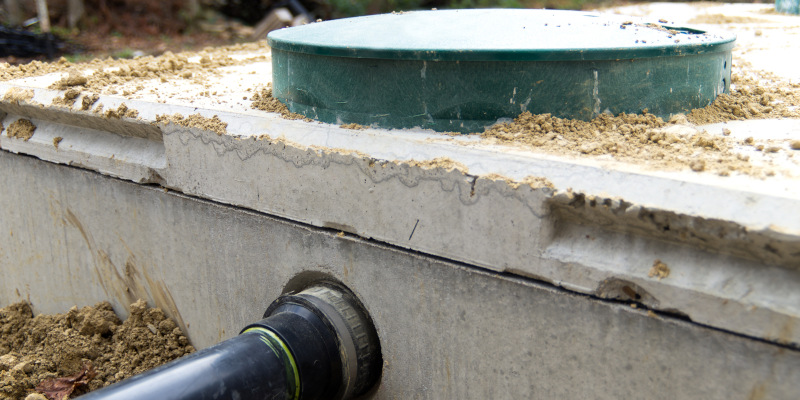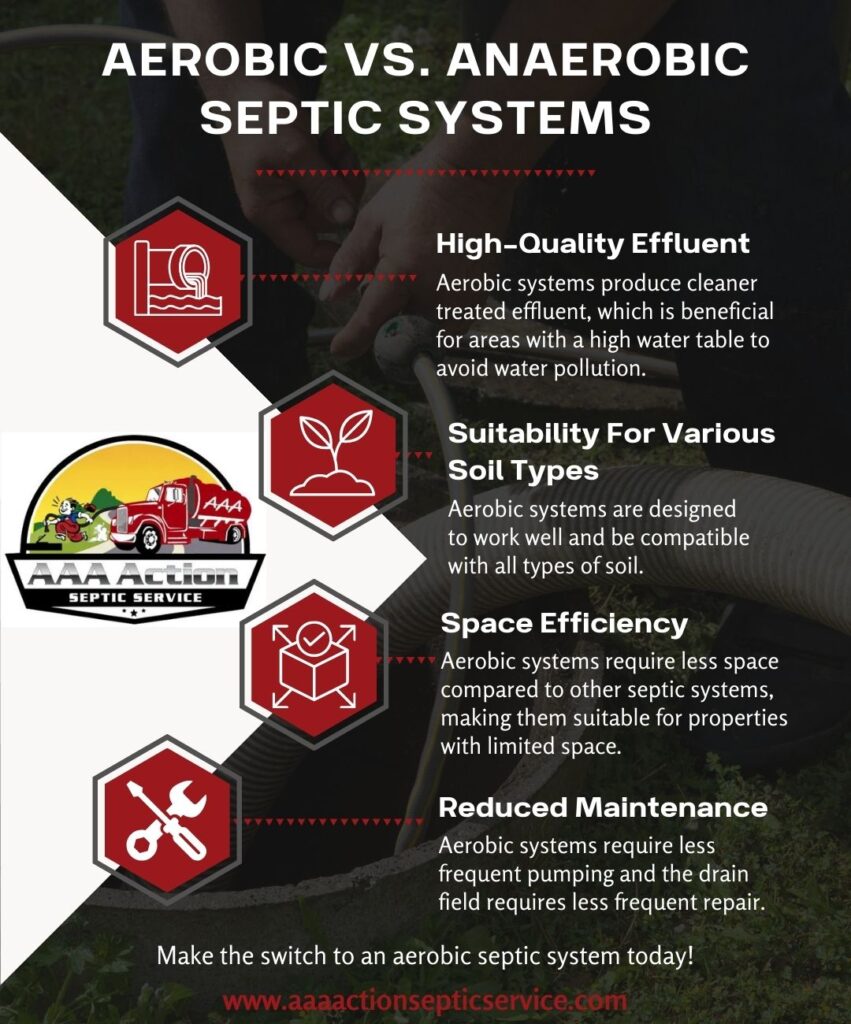Your home’s septic system is an essential part of your household. But did you know that there’s more than just one kind of septic system? Many homeowners find themselves choosing between a conventional and an aerobic septic system. If you’re not very familiar with septic systems, this choice can be especially tough.

Here is a quick guide on the key characteristics of conventional and aerobic septic systems.
Conventional Septic Systems
Conventional septic systems are simpler in terms of design compared to their aerobic counterparts. They also tend to be heavier and often cheaper than aerobic systems. A conventional septic system works by allowing solid waste to enter the septic tank and settle at the bottom. After a period of time, this solid waste turns into sludge, and any liquid waste, or scum, rises to the top of the tank.
From there, the anaerobic microbes living in the septic tank will get started on the process of turning solid and liquid waste into wastewater. After the wastewater is produced, it will travel to a prepared and carefully maintained drain field. The remaining waste left behind needs to be pumped out of the tank manually every few years. This type of system may not be for you if you don’t have permeable soil or a suitable drain field.
Aerobic Septic Systems
An aerobic septic system works by utilizing the natural processes of aerobic microbes to deal with waste. These systems have a more complex build, involving a trash tank, a treatment system, and a pump tank. The beginning of the treatment process starts similarly to that of a conventional system in that liquid and solid waste materials enter the trash tank and build up.
However, this is where the process starts to diverge. Once wastewater is produced, it’s sent to a treatment facility. Unlike the microbes used in conventional systems, aerobic microbes need an influx of aerated oxygen bubbles in order to function properly. This creates an ideal environment for the microbes to break down liquid waste. After the wastewater is broken down, it is directed to the pump tanks, where it’s completely disinfected. The pump tanks also make sure the wastewater is prepared for absorption into the ground soil.
Aerobic septic systems are more efficient than conventional systems, can be used in poor soil types, and reduce drain field clogging. While they are more expensive upfront, they make up for it in the long run due to increased performance and durability.
If you’re looking to install a new septic system, you might still have questions. Contact us today to learn more about our services.





